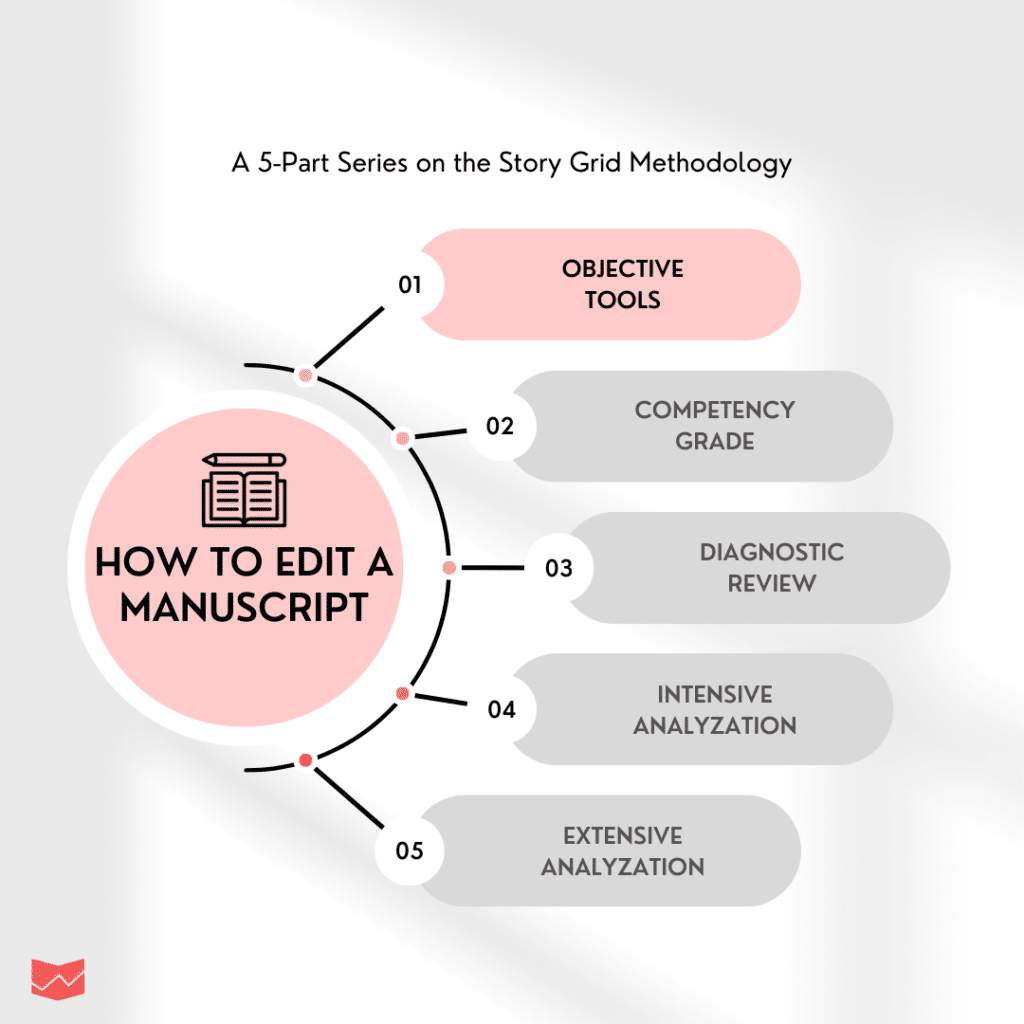When you were in college, did your friends constantly want you to read over their papers to give feedback? Maybe your friends ask for your input on their blog posts before they hit publish. Or maybe other writers regularly want you to look at their stories to find what’s not working.
These writers keep coming to you because they know they’re going to get helpful advice. You’ve always had a good sense for stories and writing, and can intuitively pick up on things that aren’t working.
And the more you do it, the more you realize you actually enjoy this process.
If this is true for you, I have some news…
You might be an editor!
If you think about it though, that’s quite the responsibility! You have writers bringing you something they’ve poured their soul and creativity into and now you have to pick it apart to find what’s wrong and advise them on how to fix it.
The hard part is, even though you have an intuitive sense of what is and isn’t working, it can feel overwhelming when you try to organize that sense into useful, actionable next steps.
Are you interested in becoming editor?
Registration is currently open for the Story Grid Editor Certification Training, the only proven methodology for leveling up your craft as an editor and building a successful editing career.
Click Here to Learn MoreAnd you definitely don’t want to get it wrong!
You don’t want to screw up someone’s manuscript by giving them the wrong advice.
Or, god forbid, send them off to spend the next six months of their life working on the wrong thing.
So you’ve got a good intuitive sense for story and you like helping writers make their work better, but that raises the next question…
How do you edit a manuscript?

If a writer brings you their manuscript, how do you generate objective, specific feedback and marry that with actionable next steps?
At Story Grid, this is not a haphazard process. We don’t read the manuscript, randomly pointing out things we feel are “off.” Instead, we put the manuscript through a rigorous diagnostic process designed to identify specific problems with the manuscript and provide clear, actionable steps to fix the problems.
The following systematic approach was developed over 30 years of in-the-trenches experience by Story Grid creator and founder Shawn Coyne.
In the high-stakes New York publishing world only about 35 percent of books turn a profit for publishers. Data from BookScan on the top 10 publishers finds that 66 percent of books sell less fewer 1,000 copies, and a mere 2 percent sell more than 5,000.
Shawn has published hundreds of titles at the major publishers as the head of many imprints and as an independent publisher. Not one title he published sold fewer than 1,000 copies, and 86 percent of his titles have been profitable.
This systematic approach to editing has been proven out over decades to be the only reliable way to increase the likelihood a book will be loved by its readers so much, they tell everyone they know.
In this series you will learn the process Story Grid editors use to analyze a manuscript and produce clear next steps to level up the story.
Step 1: Read the manuscript.
Start to finish, read the whole thing. No matter what.
A Story Grid editor reads the entire manuscript to both honor the work the writer has done and ensure the feedback takes the full context of the writing into account.
Step 2: Complete an Editor’s Six Core Questions Analysis
The EDITOR’S SIX CORE QUESTIONS is the first level of evaluation a Story Grid editor applies to diagnose a manuscript. This gives a global view of the story.
The Editor’s Six Core Questions are:
- What is the Genre?
- What are the Conventions and Obligatory Moments?
- What are the Narrative Device and Point of View?
- What are the Objects of Desire for the protagonist and antagonist?
- What is the Controlling Idea?
- What are the Beginning Hook, Middle Build Up, Middle Break Down, and Ending Payoff of the Global Story?
Click here to read a more in-depth guide to the Editor’s Six Core Questions.
Step 3: Create a Story Grid Scene Spreadsheet for the first five scenes of the manuscript.
The STORY GRID SPREADSHEET is the equivalent of looking at a scene under a microscope. By evaluating a scene across thirty-five data points, it quickly becomes apparent if the scenes are working or not.
The columns are separated into five groups:
- Identifying the Scene (Columns A-F)
- Change (Columns N-S)
- Continuity (Columns T-W)
- Avatars (Columns X-AA)
- Global Story (Columns AB-AJ)
Most manuscripts do not work at a global level initially, so it is best to not invest the time in doing a spreadsheet analysis of the entire manuscript as this takes twenty to forty (or more) hours to complete.
However, by doing an in-depth analysis of the first five scenes, we get a snapshot of the author’s ability to craft working scenes.
Click here to learn more about the Story Grid Spreadsheet.
Now what?
It’s time to step back and evaluate the manuscript.
After reading the manuscript, completing a global analysis, and putting the first five scenes under the microscope, you’ve got a good sense for the writing.
The next step is to assign the competency grade to the manuscript.
But that is a whole different skill set an editor needs.
At Story Grid, we assign the manuscript (not the writer) a grade from 1 through 5.
This is important because it tells you what needs to happen next with the manuscript.
Click Here for Part 2 of this Series